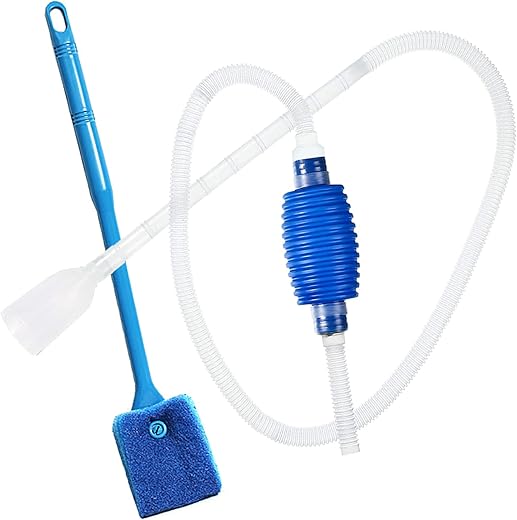Keeping pet fish offers a window into the fascinating underwater world and can be a rewarding hobby that brings tranquility and beauty into your home. However, maintaining a healthy aquarium requires knowledge, commitment, and attention to detail. This blog post will guide you through the essentials of aquarium care, from selecting the right fish and equipment to maintaining water quality and ensuring your aquatic pets thrive.
Choosing the Right Fish
Selecting fish suitable for your experience level and tank setup is crucial:
- Beginner-Friendly Species:
- Guppies: Hardy and colorful, suitable for small tanks.
- Zebra Danios: Active and adaptable to various conditions.
- Platies: Peaceful and easy to care for.
- Compatibility Considerations:
- Temperament: Ensure species can coexist peacefully.
- Environmental Needs: Match fish with similar temperature and pH requirements.
- Tank Size and Stocking Levels:
- Avoid Overcrowding: Follow the general rule of one inch of fish per gallon, adjusted for species specifics.
Setting Up the Aquarium
Creating a suitable environment involves several key steps:
- Tank Selection:
- Size: Larger tanks are more stable and forgiving of mistakes.
- Material: Glass or acrylic, each with pros and cons regarding durability and clarity.
- Filtration Systems:
- Types: Hang-on-back filters, canister filters, sponge filters.
- Function: Remove physical debris, chemical contaminants, and support biological filtration.
- Heating and Lighting:
- Heaters: Maintain consistent temperatures appropriate for your fish species.
- Lighting: Supports plant growth and enhances fish coloration.
- Substrate and Decorations:
- Gravel or Sand: Choose based on aesthetic preference and species needs.
- Hiding Places: Provide caves, plants, and structures for fish to explore and feel secure.
Cycling the Aquarium
Before adding fish, the tank must undergo a nitrogen cycle:
- Establish Beneficial Bacteria:
- Ammonia Conversion: Bacteria convert toxic ammonia to nitrite and then to less harmful nitrate.
- Methods:
- Fishless Cycling: Use ammonia sources without fish to initiate the cycle.
- Monitoring: Test water parameters regularly until ammonia and nitrite levels are zero.
Water Quality Maintenance
Maintaining optimal water conditions is vital for fish health:
- Regular Testing:
- Parameters: Ammonia, nitrite, nitrate, pH, hardness, and temperature.
- Water Changes:
- Frequency: Typically 10-25% weekly, depending on tank conditions.
- Process: Use a gravel vacuum to remove debris and replace with dechlorinated water.
- Filtration Maintenance:
- Cleaning: Rinse filter media in tank water to preserve beneficial bacteria.
- Chemical Additives:
- Dechlorinators: Neutralize chlorine and chloramines in tap water.
- Conditioners: Adjust pH and hardness as needed.
Feeding Your Fish
Proper nutrition supports growth and vitality:
- Diet Variety:
- Flakes and Pellets: Staple foods for most species.
- Frozen or Live Foods: Brine shrimp, bloodworms for added nutrition.
- Feeding Schedule:
- Frequency: Once or twice daily in small amounts.
- Avoid Overfeeding: Excess food can pollute the water and harm fish health.
Monitoring Fish Health
Early detection of issues can prevent serious problems:
- Behavioral Signs:
- Active Swimming: Indicates good health.
- Lethargy or Hiding: May signal stress or illness.
- Physical Indicators:
- Clear Eyes and Fins: Healthy appearance.
- No Visible Lesions: Absence of spots, fungus, or discoloration.
- Quarantine New Additions:
- Prevent Disease Introduction: Isolate new fish for observation before adding to the main tank.
Common Problems and Solutions
- Algae Growth:
- Causes: Excess light, nutrients from overfeeding.
- Control: Adjust lighting, add algae-eating species, perform regular maintenance.
- Ich (White Spot Disease):
- Symptoms: White spots on fins and body.
- Treatment: Increase temperature gradually, use medications as directed.
- Ammonia Spikes:
- Causes: Overfeeding, overstocking, inadequate filtration.
- Response: Perform immediate water changes, test water, adjust feeding and stocking levels.
Enhancing the Aquarium Experience
- Live Plants:
- Benefits: Improve water quality, provide natural habitat.
- Care Requirements: Appropriate lighting and possible fertilization.
- Aquascaping:
- Designing the Tank: Create aesthetically pleasing layouts that also meet fish needs.
- Observation and Enjoyment:
- Relaxation: Watching fish can reduce stress and provide entertainment.
Conclusion: A Rewarding Aquatic Journey
Caring for pet fish is a fulfilling hobby that combines science, art, and responsibility. By understanding the needs of your fish and providing a well-maintained environment, you ensure their health and happiness. The vibrant life of an aquarium not only enriches your home but also offers a glimpse into the wonders of the underwater world.








